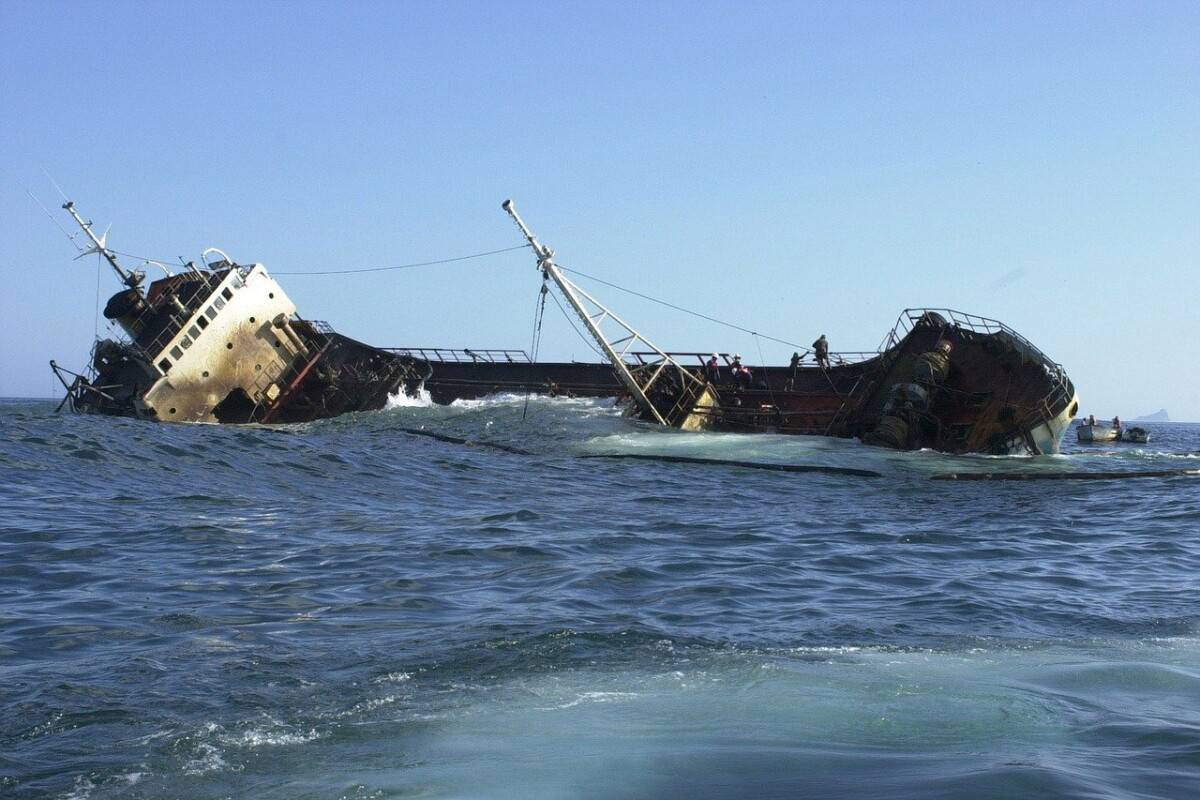Our world is a dangerous one. As beautiful and unique sailing is, it has its own attendant problems and one of them is sinking. Names like Titanic ring a bell in the hearts of every one with a certain amount of knowledge on history. And this is because of the terrible end that they met while sailing.
This does not in any way mean that sailing should altogether be avoided as every single means of transportation has its own pros and cons. This however calls for an understanding of what to do when all hell is let loose on the sea.
Why You Need to Know This
History tells us that over nineteen cruise ships have sunk since 1980. Now that’s a huge number. While many of those recorded no fatalities, the idea of going down like Leonardo DiCaprio and Kate Winslet is enough to keep superstitious travelers on dry land. No one wants to end up on a raft on a cold icy sea gasping for breath and waiting for help that may never come.
What’s even worse is that cruise ships only account for a tiny percentage of sea vessels that sink. It’s believed that tens of thousands of boats sink every year. These although are not exact statistics. Many of these are docked boats, but a lot of them sink at sea. From ferries and freighters to sailboats and yachts, no one is above sinking.
The question then is: would you know what to do if your sailboat, yacht, or cruise ship went down? Does a dent on your ship mean certain death? You’ll be relieved to find out that you can survive a sinking ship or boat if you remain calm and take the right steps. If you are smart enough, you may even be able to prevent the boat from sinking at all as long as you act fast and have the proper equipment.
What You Need to Know About Sailing
Ships and boats are made to float on top of the water and not swim below it. There are however quite a few things that can go wrong to turn your boat into a compulsory submarine.
If this happens, taking on water is inevitable. This is due to many things. Large waves often break over the sides, and tiny leaks are common. The water will usually find its way to the lowest point of a boat, that is the bilge area.
This is why boats are equipped with bilge pumps to usher the water back out once it’s reached a certain level. Boats often sink while docked, but unless you live on your boat, that’s not a life-threatening scenario.
Why Would Your Ship Sink
There are many reasons why your ship or boat may want to end up at the bottom of the ocean and join the ancient remains of famous ships down there. below are a few of them.
Navigation Error
A simple definition of this is striking an object with your boat. It could be rocks, ice, reefs, logs, or anything else large enough to do damage to the hull, or body, of your boat. The best way to combat this is by being careful.
This means you have to slow down if you see debris and be especially cautious after storms. Storms wash in a great deal of foreign objects. If you see something floating, there’s a good chance there’s more under the surface. That it is small above does not mean it is small beneath. If it sounds like you’ve hit something, stop the boat immediately and check outside and below for holes or leaks.
A Low Transom
The transom is the flat vertical surface that forms the rear, or stern end, of the boat. The motor is always mounted onto the transom for outboard vessels. For larger inboard vessels, you’ll find the boat’s name on the transom.
Though this may not be very obvious, the idea behind a transom is very simple. It is meant to be high enough that it won’t take on water. Sometimes, simple design flaws can leave your transom too low. Improper weight distribution will occur and this can also lower a transom to the point that waves can come over it and flood the deck.
You can prevent this from happening by not storing all your heavy gear in the stern of the boat. Scuba gear, coolers, fishing equipment and bait should all be distributed evenly along the ship. This keeps the transom at a safe height. Also, you should also never anchor from the stern side. This could pull the transom down even further.
Drain Plugs
Boats sink all the time because of missing drain plugs. This happens almost all the time. When a boat travels forward, the entire vessel sits higher on the water than it does at rest, with the front higher than the rear.
When this happens, water collected from waves or sea spray is allowed to exit the boat through a drain located at the rear of the boat at about deck level. Once you begin traveling forward, the boat tilts up and the water will flow toward the drain and back out.
However, the problem arises when the captain forgets to stop the drain once the boat is at rest with a small, watertight plug. This happens a number of times. When the boat stops moving, , it sinks lower and begins to take on water through the drain. To prevent trouble, always carry extra drain plugs and try keeping one near the ignition as a reminder.
What To Do When You Are Sinking
Be Ready
Anyone who’s had experience as a scout will know these two watchwords: “be prepared”. The meaning behind this famous saying is closely tied to another famous saying “knowing is half the battle”. Those two bits of advice could very well save your life on a sinking ship.
Before you even stepping aboard, you should prepare an evacuation bag complete with the tools you’d need to survive on a raft or an island.
Be Knowledgeable
You should know everything there is to know. Be sure to explore the ship and become familiar with all the emergency exits and evacuation maps. Know where the closest lifeboat to your cabin is, and be sure to know where all the life jackets are.
Floating is important. In fact, when it comes to ocean survival, floating is everything. You may have been able to tread water for hours back in the old swimming pool, but the ocean is much, much colder and rough. There are no laws here. You’ll already be fatigued and in a relative state of shock, and the ocean is filled with various forms of dangly leg-eaters.
Stay Calm
You are tense, we get it. In fact, you are supposed to be tense. Screaming and running is the quickest way to get yourself killed. When you lose your calm, you’re not thinking clearly, making terrible decisions, expending valuable energy and rushing into the madness of the mob.
Following the multitude as against following instructions is the easiest way to end up death. One trip and you could get trampled. Let the frenzying folk do their thing, and practice a little something called square breathing. Stay calm.
Get to Safety
Getting to the deck as fast as possible is extremely important. When panic sets in it’s easier to lose orientation and to get lost. Similarly to a burning building situation, avoid using the elevators; it would be terrible to get stuck in one as the boat goes under. If you have time, make sure to grab your evacuation bag!
Call for Help
If you’re on a big cruise ship, calling for help is none of your business. If you’re on your own boat however, it’s important to not only have a radio, but to use it. The coastguard and other ocean rescue authorities are constantly monitoring these channels and will be able to dispatch help in an emergency.
Conclusion
Sailing is good and fun. Sinking is an avoidable incident. Do not let it get you killed.

